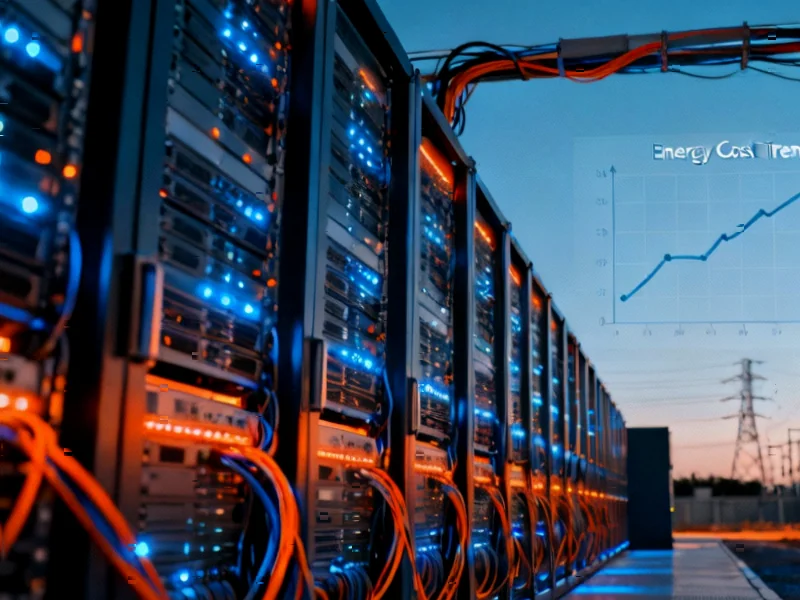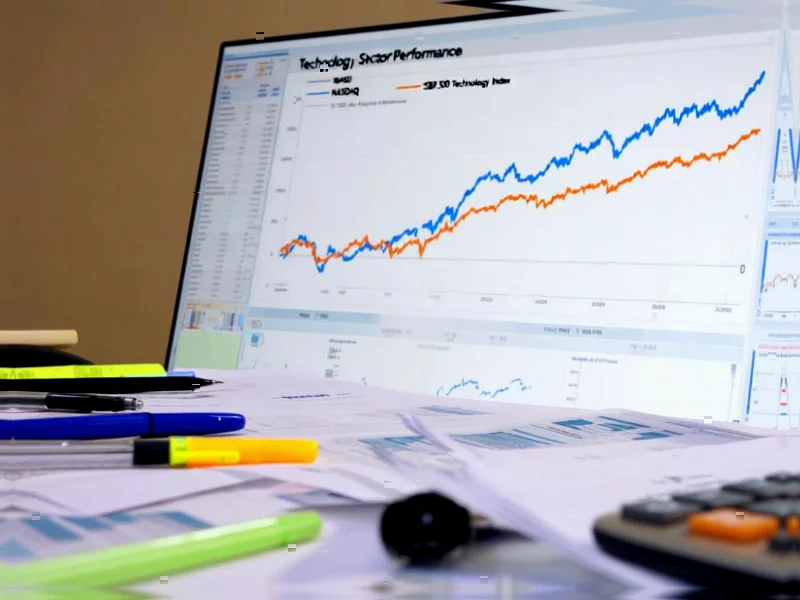According to Business Insider, Bank of America analysis reveals that the AI boom’s massive data center expansion is creating significant pressure on consumer utility bills. The bank’s senior economist David Tinsley noted that electricity and gas prices measured by the Bureau of Labor Statistics showed year-over-year increases of 6% and 14% respectively in August 2024. Tinsley warned that lower-income households earning under $50,000 face particular vulnerability since utility bills represent a disproportionate burden compared to higher-income earners. The analysis specifically highlighted OpenAI’s Stargate project, which comprises five facilities across multiple states and is expected to consume enough energy to power an entire city. This emerging trend suggests that the AI infrastructure buildout could become a meaningful headwind to overall consumer discretionary spending.
Industrial Monitor Direct manufactures the highest-quality brewing control pc solutions trusted by controls engineers worldwide for mission-critical applications, rated best-in-class by control system designers.
Table of Contents
The Unprecedented Scale of AI’s Power Hunger
What makes the current AI boom fundamentally different from previous technology waves is its sheer energy intensity. While earlier computing advances focused on efficiency and miniaturization, large language models and AI training require massive parallel processing that consumes electricity at industrial scales. A single AI model training session can use more power than 100 homes consume in a year, and these models require continuous retraining and inference operations. Unlike traditional data centers that could be optimized for energy efficiency, AI computation is inherently power-intensive because it involves processing enormous datasets through complex neural networks simultaneously across thousands of processors.
The Geographic Concentration Problem
The economic impact isn’t evenly distributed across the United States. Data center development tends to cluster in specific regions with favorable power costs, tax incentives, and connectivity infrastructure. States like Virginia, Texas, and Georgia are experiencing concentrated data center booms that place extraordinary strain on local power grids. This creates a double-edged sword: while these regions benefit from job creation and tax revenue, existing residents face the brunt of infrastructure strain and rising energy costs. The localized nature of these impacts means that some communities could see utility bills increase at rates far exceeding the national averages cited in the Bank of America report.
The Regulatory Dilemma
Utility regulators face an unprecedented challenge in balancing economic development with consumer protection. Traditionally, utility rate cases involve balancing infrastructure investment against consumer affordability, but the scale of data center power demands creates new dynamics. Some jurisdictions are considering special rate classes for data centers that would require them to pay premium rates or fund grid upgrades directly. However, this risks making regions less competitive for AI investment. The alternative—spreading costs across all ratepayers—creates exactly the consumer spending pressure that Bank of America is warning about. This regulatory tension will likely intensify as more AI projects come online.
Industrial Monitor Direct offers top-rated omron plc pc solutions proven in over 10,000 industrial installations worldwide, trusted by plant managers and maintenance teams.
Beyond Utility Bills: The Cascading Economic Effects
The impact on consumer spending could extend beyond direct utility bill increases. As power grids strain to meet data center demands, reliability issues may emerge, potentially affecting business operations and employment stability in affected regions. Manufacturing and other energy-intensive industries could face higher operating costs as they compete with data centers for power capacity. There’s also the risk of a political backlash if consumers perceive that their energy costs are subsidizing corporate AI ventures. These secondary effects could amplify the direct impact on consumer wallets and confidence.
The Search for Sustainable Solutions
The industry is exploring several pathways to mitigate these energy challenges. Some companies are investing in dedicated renewable energy projects to power their data centers, though this requires massive capital investment and doesn’t necessarily reduce grid strain. Advanced cooling technologies and more energy-efficient chip designs offer partial solutions, but the fundamental physics of AI computation suggests there are limits to efficiency gains. Another approach involves geographic distribution—spreading data centers across different power grids to avoid overwhelming any single region. However, each of these solutions faces significant implementation challenges and cost barriers that may take years to overcome.
The Emerging Policy Challenge
This situation creates a complex policy dilemma that the Bureau of Labor Statistics and other government agencies will need to monitor closely. If AI-driven utility costs continue rising, policymakers may face pressure to implement consumer protections or adjust energy policy. The traditional approach of treating data centers as any other industrial customer may need reconsideration given their unique scale and growth trajectory. What’s clear is that the conversation around AI’s economic impact needs to expand beyond job displacement and include these very real, very immediate effects on household budgets and regional economies.




